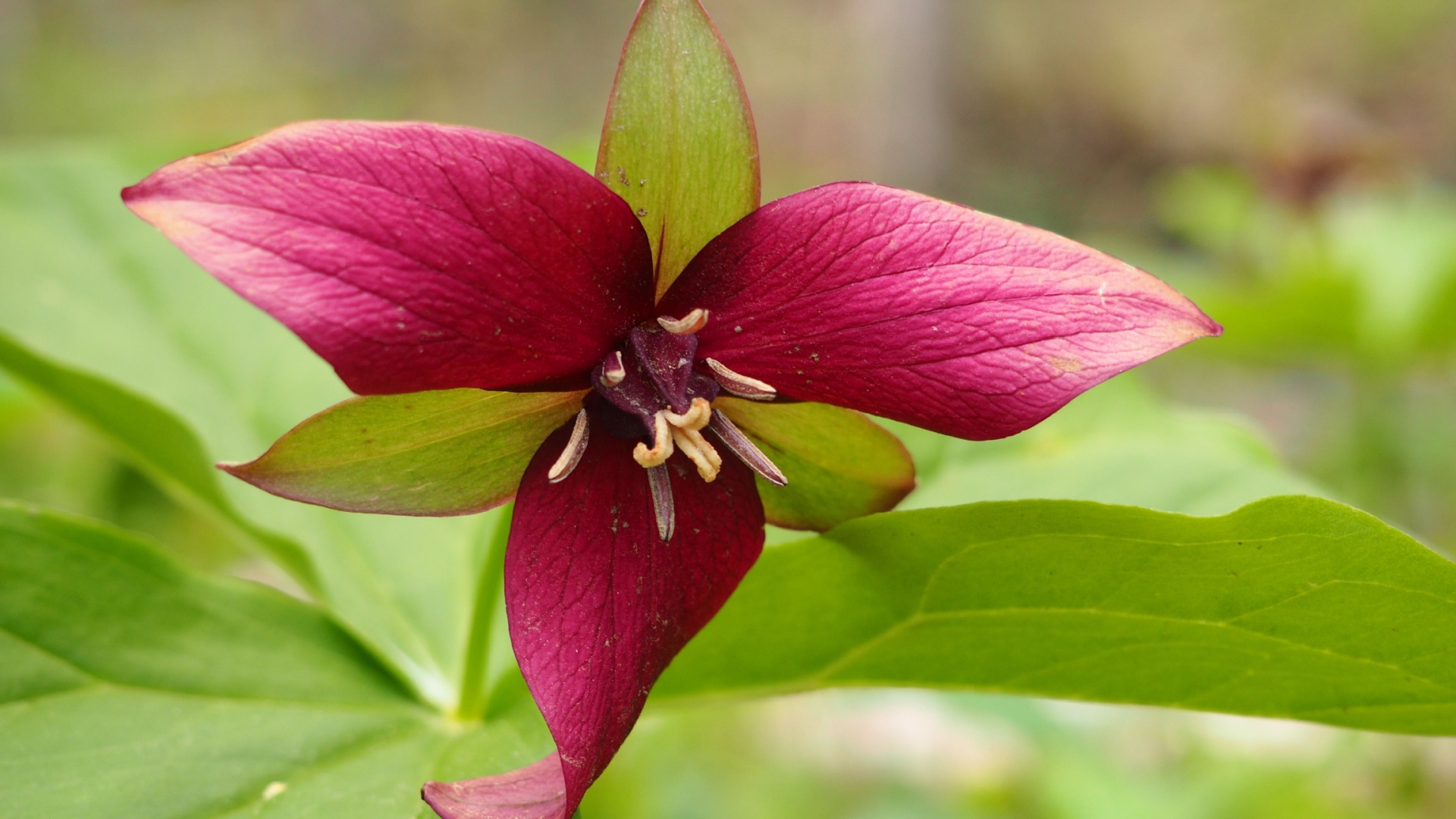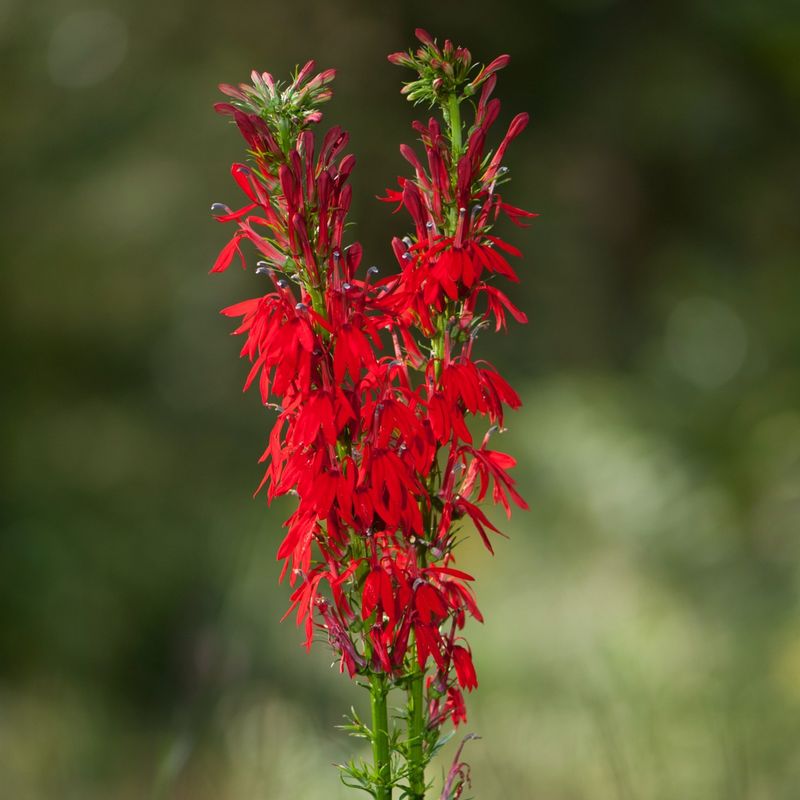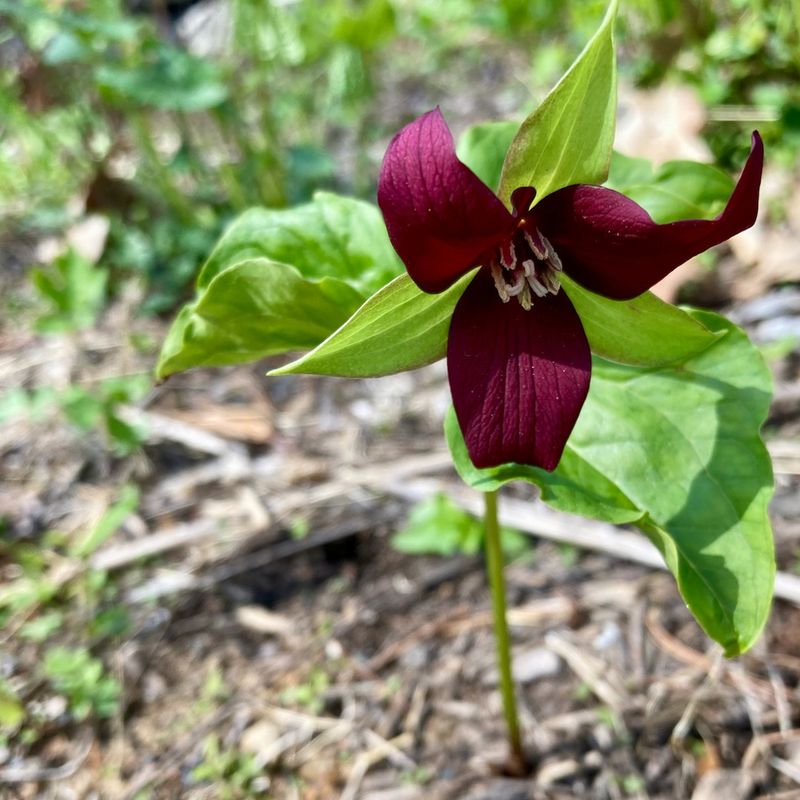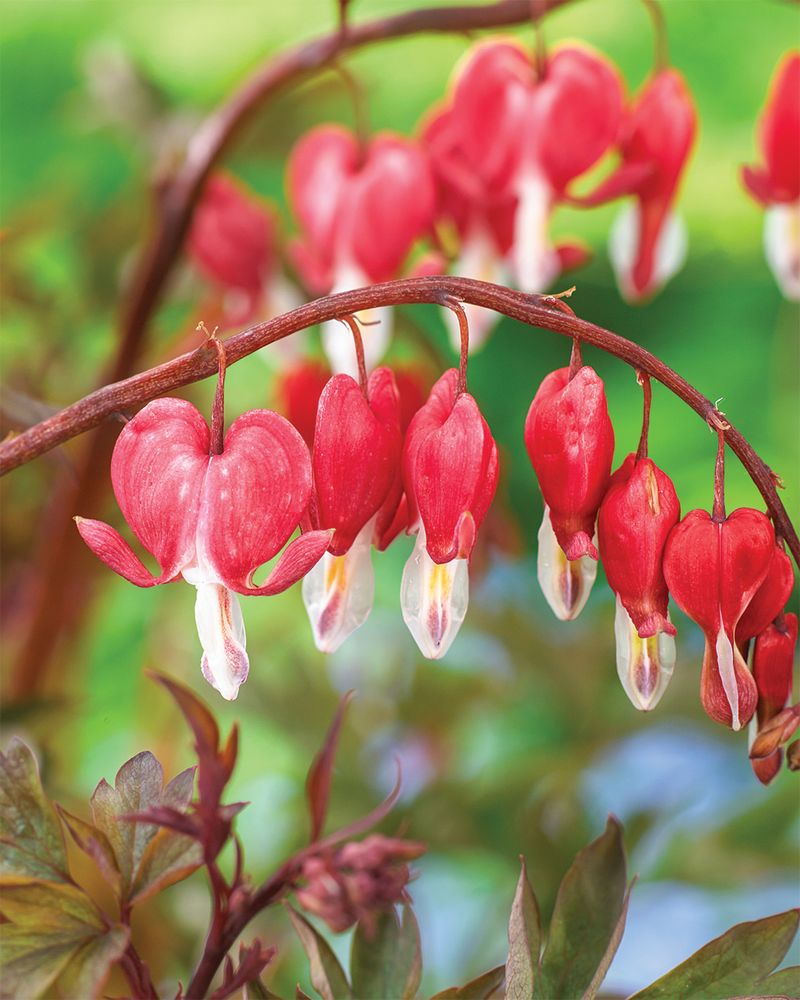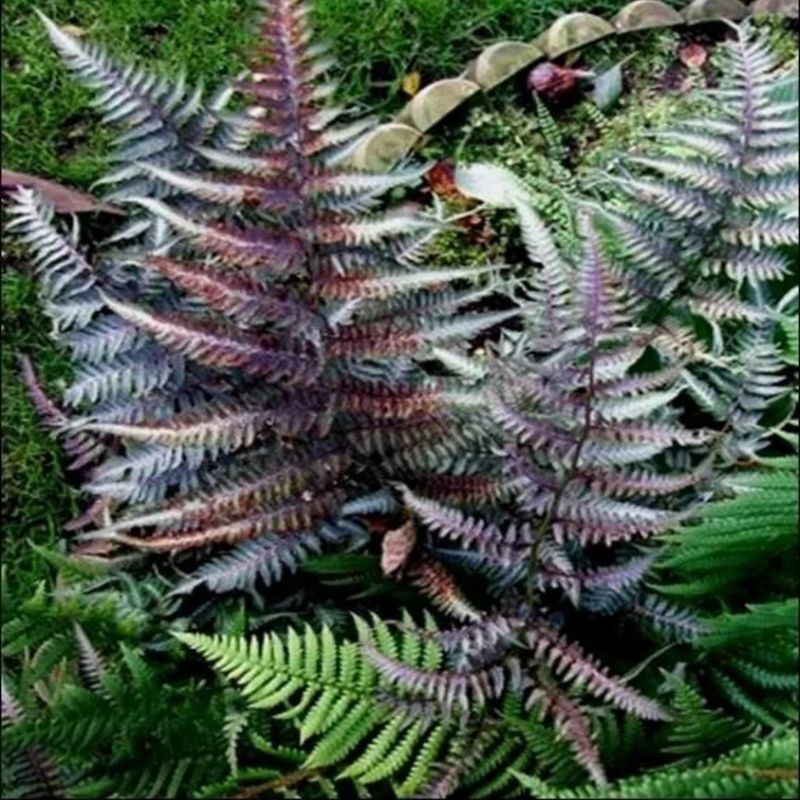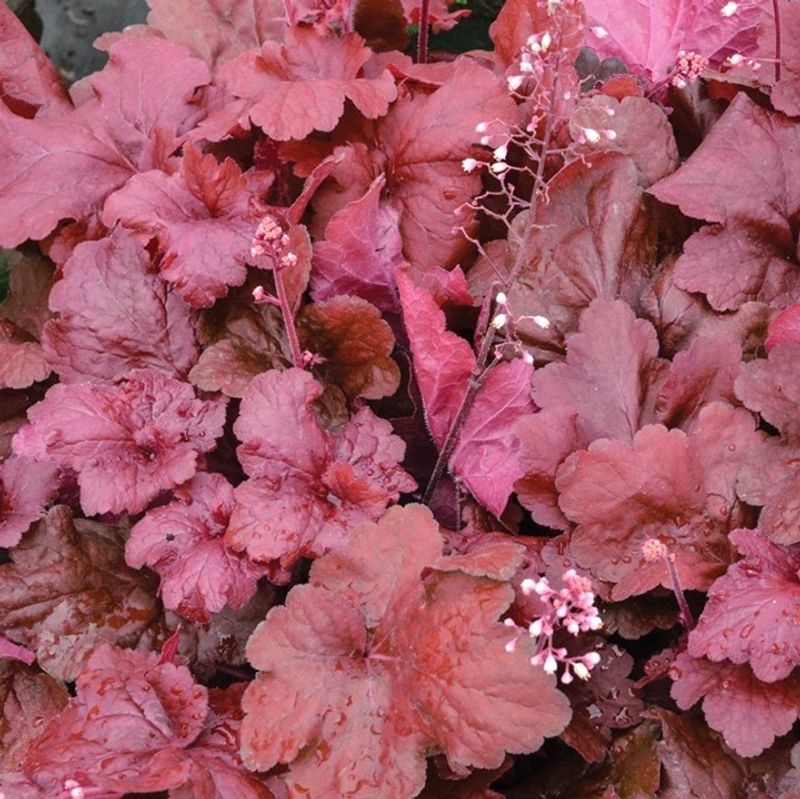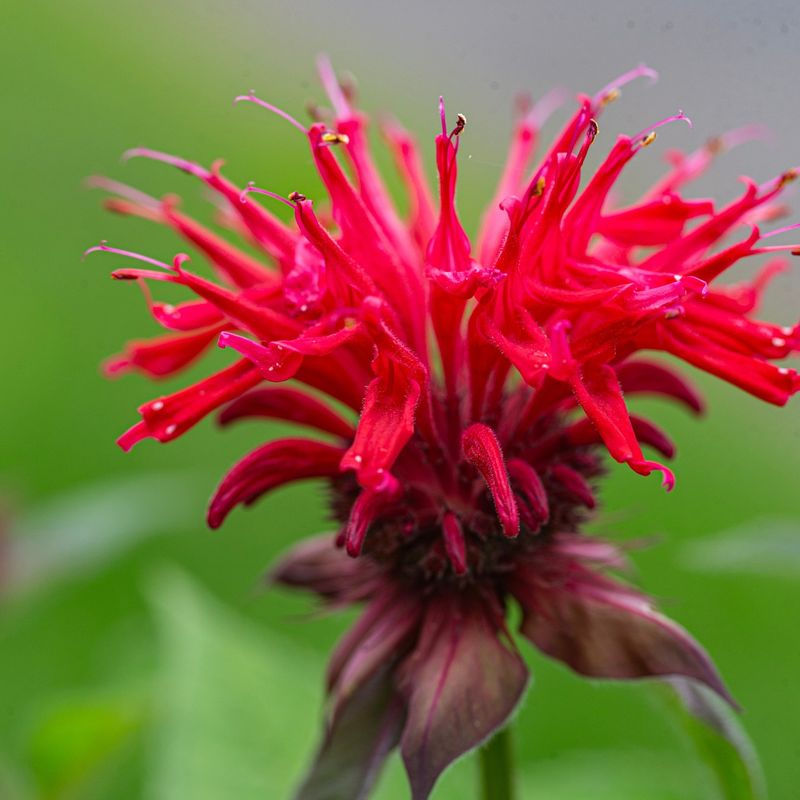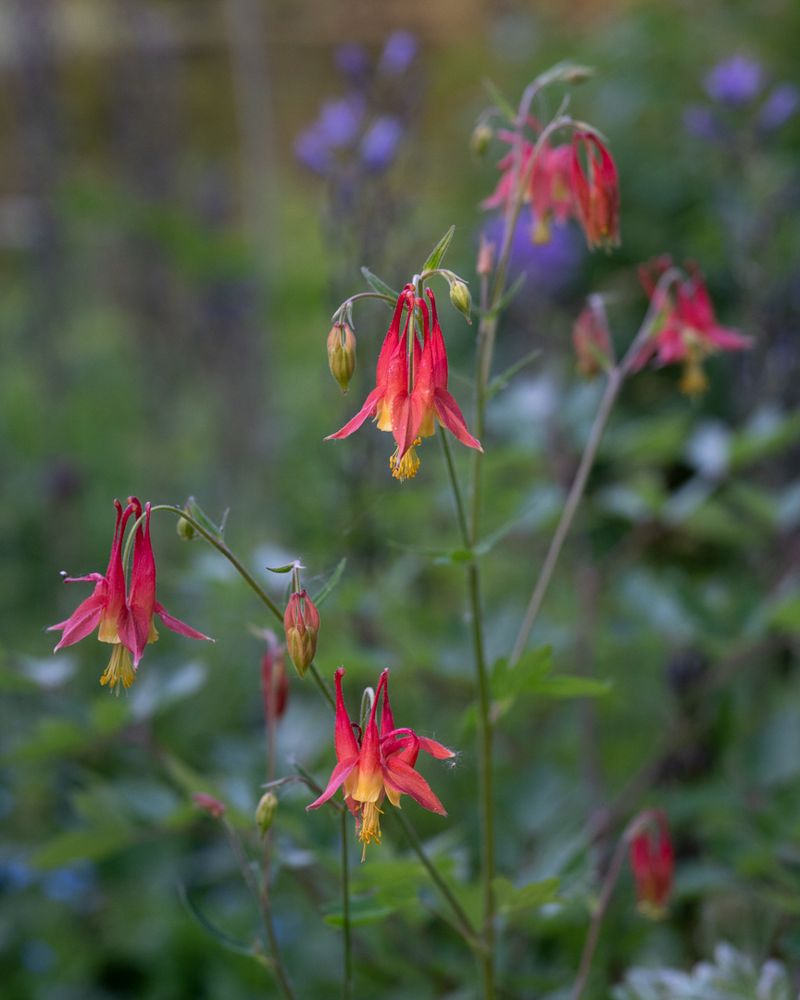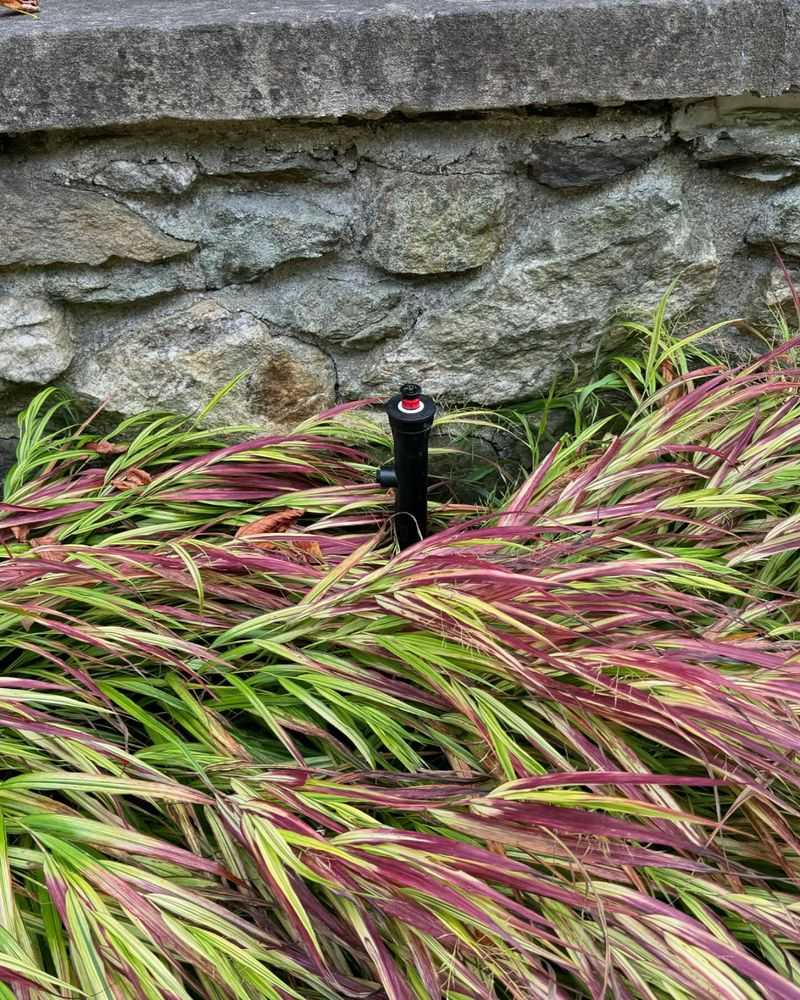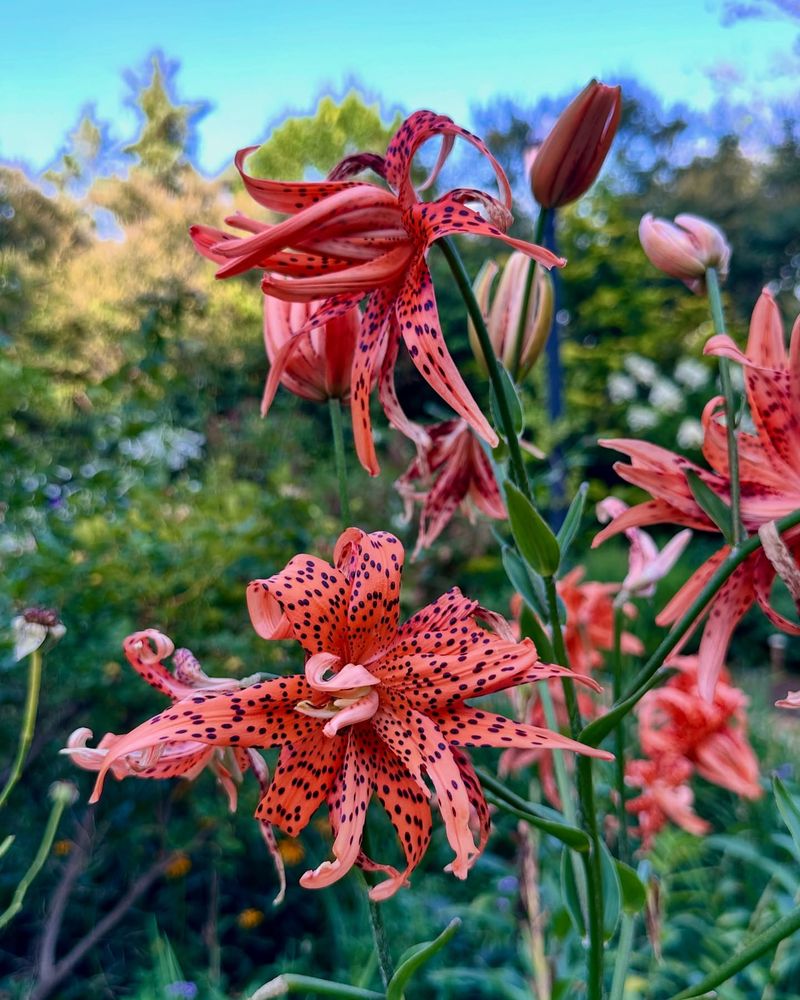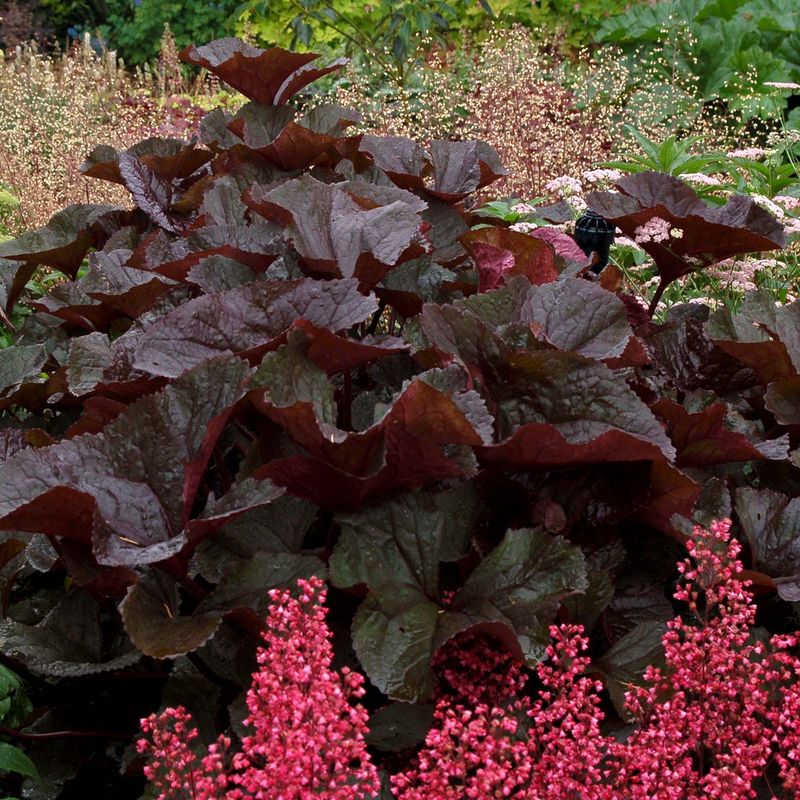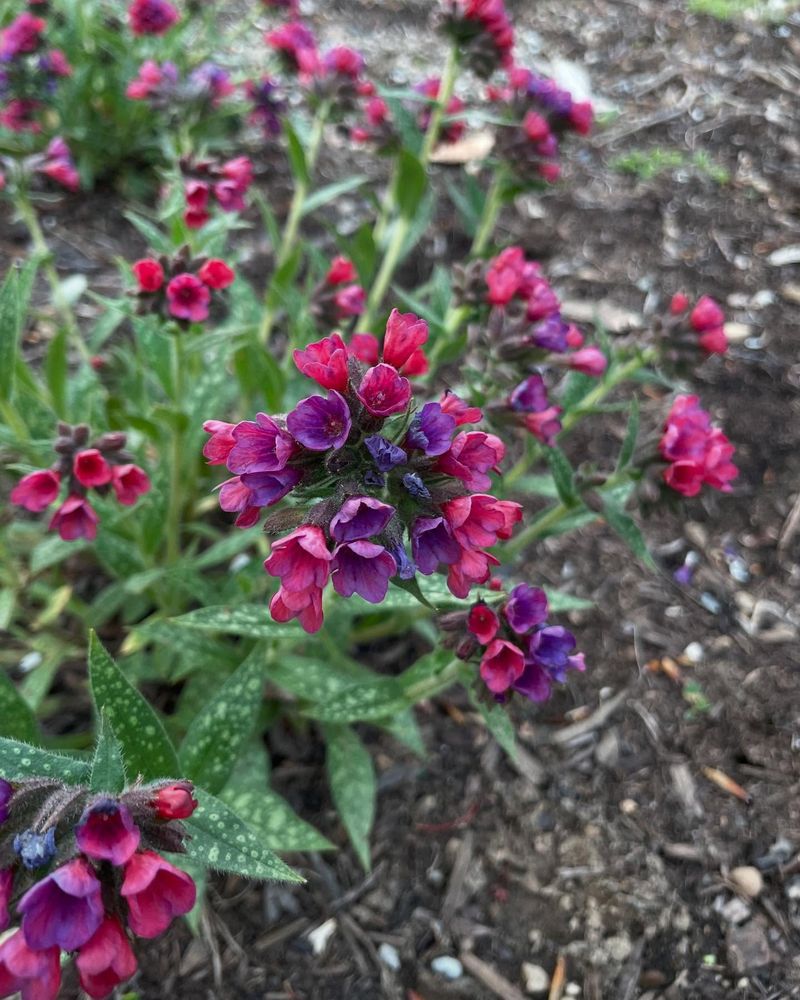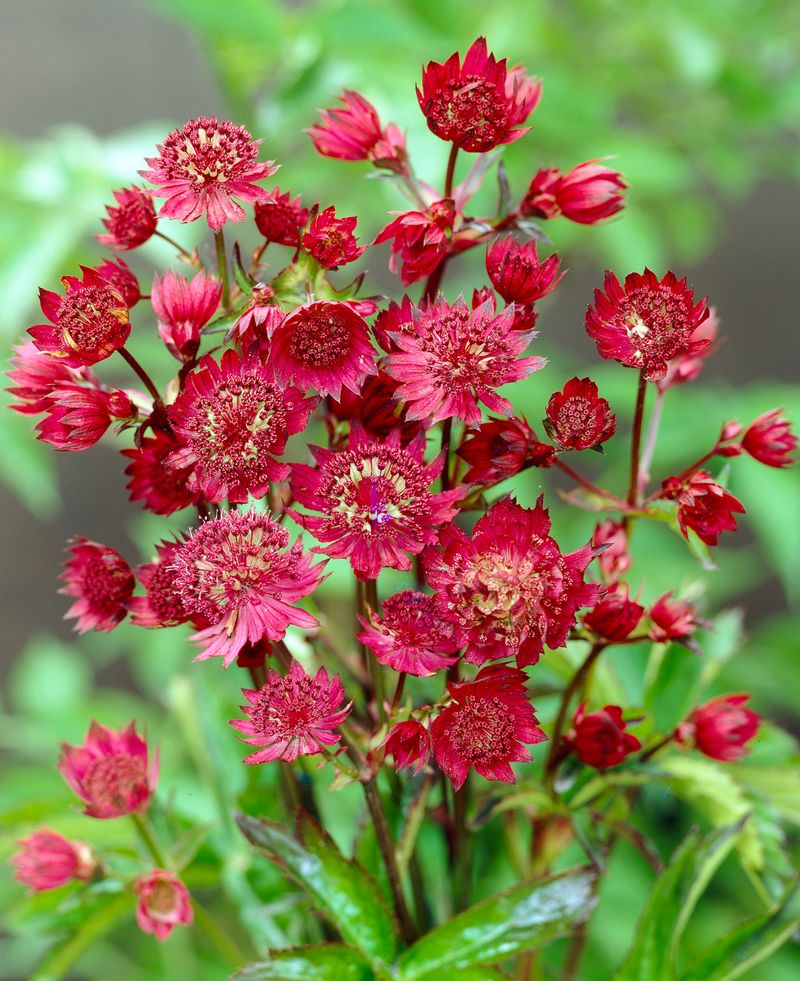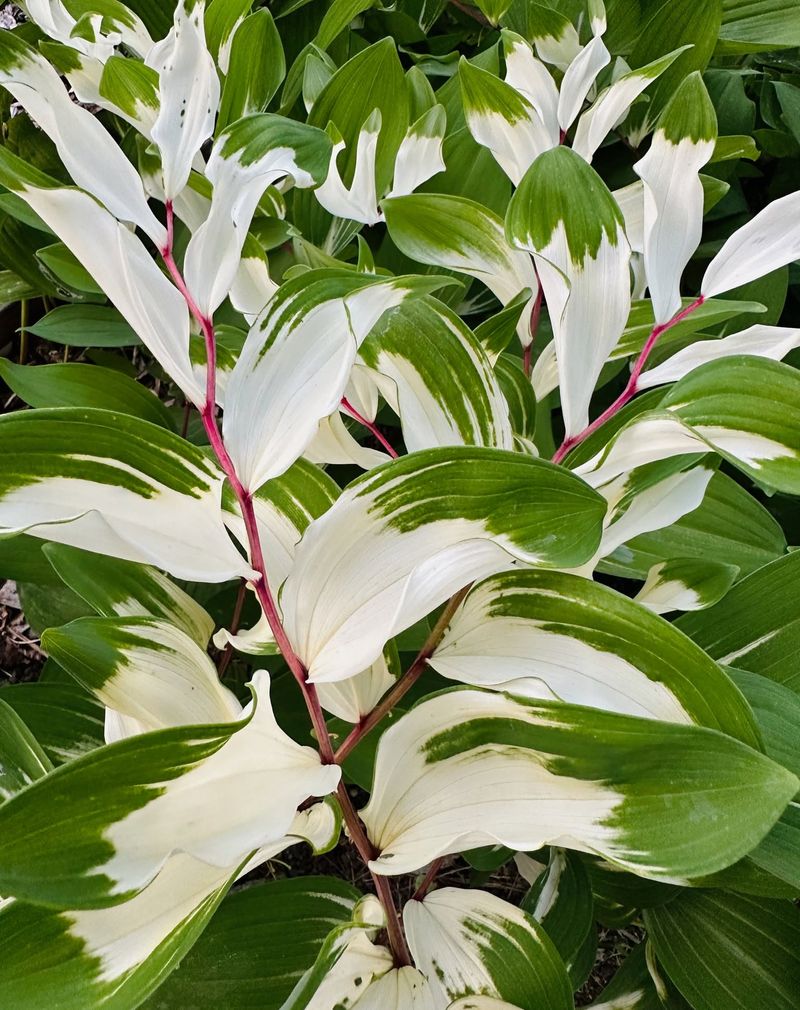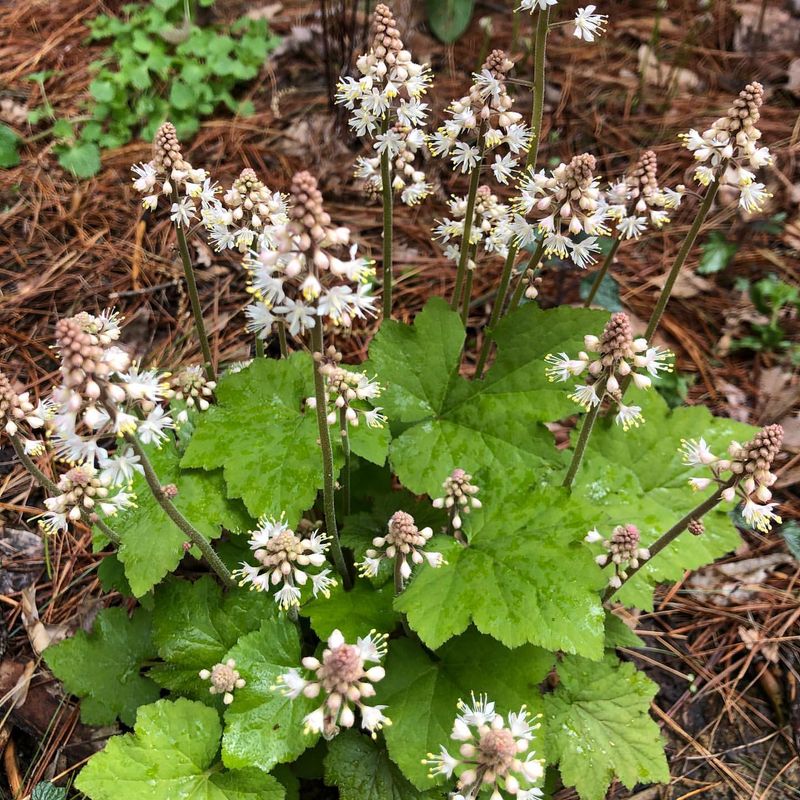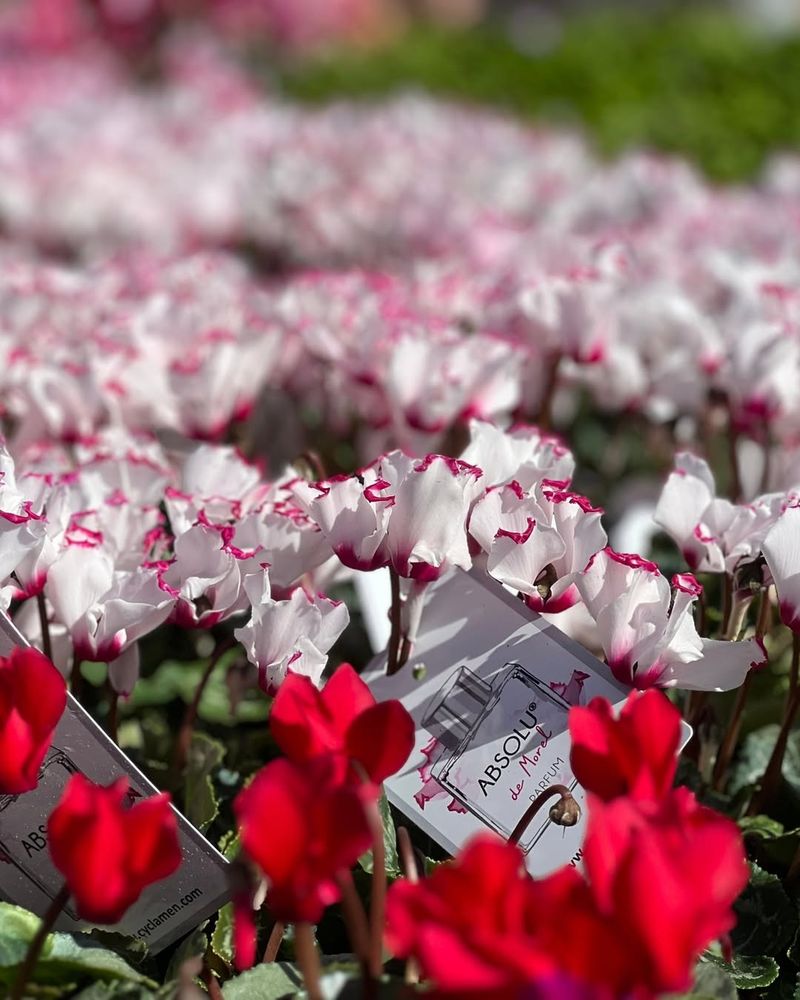Massachusetts gardens often have shady spots that can feel a bit dull. Adding red perennials to these areas brings vibrant color where it’s least expected.
These hardy plants return year after year, creating reliable pops of crimson, scarlet, and ruby tones even in the coolest corners of your garden.
1. Astilbe ‘Fanal’
Ruby-red plumes rise like feathery torches above lacy, fern-like foliage in mid-summer. Massachusetts gardeners love this moisture-loving perennial for its ability to thrive in those difficult spots where sun barely reaches.
Plant ‘Fanal’ in rich, consistently moist soil and watch it return with increasing vigor each season. Its dramatic flower spikes create vertical interest while deer and rabbits typically leave it alone.
2. Cardinal Flower (Lobelia cardinalis)
Native to Massachusetts wetlands, cardinal flower produces brilliant scarlet spikes that seem to glow in shady spots. Hummingbirds can’t resist the tubular blooms that appear from July through September.
Growing up to 4 feet tall, this striking perennial prefers consistently moist soil and partial shade. The upright stalks add dramatic vertical elements to woodland gardens while supporting local wildlife.
3. Red Trillium (Trillium erectum)
Also called Wake Robin, this woodland native unfurls deep burgundy-red blooms in early spring before trees fully leaf out. The three-petaled flowers hover above distinctive whorls of three leaves, creating a geometric beauty in shady corners.
Slow-growing but long-lived, Red Trillium forms established colonies over time. Perfect for naturalistic Massachusetts gardens, it pairs beautifully with ferns and other spring ephemerals beneath deciduous trees.
4. Bleeding Heart ‘Valentine’ (Dicentra spectabilis)
Heart-shaped crimson blooms dangle from arching stems like strings of jewels in spring. ‘Valentine’ offers a vibrant red twist on the classic bleeding heart, with deeper color than the traditional pink variety. Flourishing in Massachusetts’ cool spring conditions, this shade-lover goes dormant during summer heat.
Plant alongside late-emerging perennials like hostas to fill the space. The romantic blooms and blue-green foliage create a magical woodland atmosphere.
5. Japanese Painted Fern ‘Ursula’s Red’
Burgundy-red stems and deep crimson accents make this fern a standout among typically green shade plants. The fronds emerge with a striking metallic red sheen before developing silver-gray highlights as they mature.
Perfectly suited for Massachusetts’ woodland gardens, ‘Ursula’s Red’ maintains its color throughout the growing season. Low-growing and clump-forming, this fern creates a beautiful textural foundation beneath taller shade perennials.
6. Coral Bells ‘Fire Alarm’ (Heuchera)
Vibrant red foliage blazes year-round in this standout heuchera variety. The ruffled, leathery leaves form neat mounds that light up dark corners of Massachusetts gardens with their fiery color. Small bell-shaped flowers on slender stems appear in summer, attracting hummingbirds.
‘Fire Alarm’ maintains its brilliant color even in significant shade, making it perfect for brightening those difficult spots beneath trees where little else thrives.
7. Red Bee Balm (Monarda didyma)
Scarlet, shaggy blooms resembling exploding fireworks attract swarms of butterflies and hummingbirds in midsummer. Native to eastern North America, red bee balm can handle partial shade in Massachusetts gardens while still producing abundant blooms.
Aromatic foliage gives off a minty-citrus scent when brushed against. This clump-forming perennial spreads gradually to form impressive colonies, making it excellent for naturalizing in woodland edges where it receives morning sun and afternoon shade.
8. Red Columbine (Aquilegia canadensis)
Nodding, star-shaped flowers combine scarlet and yellow on delicate stems that dance above blue-green foliage. This native wildflower self-seeds gently throughout shady Massachusetts gardens, creating charming colonies.
Hummingbirds dart between the distinctive spurred blooms in late spring. Red columbine’s airy growth habit makes it perfect for softening woodland edges or filling gaps between shrubs. The ferny foliage remains attractive even after the flowering period ends.
9. Japanese Forest Grass ‘Red Riding Hood’ (Hakonechloa)
Cascading blades of grass with burgundy-red tips create flowing movement in shady corners. Unlike most red perennials that focus on flowers, this ornamental grass offers months of colorful foliage that intensifies as temperatures cool.
Slow-growing but worth the wait, ‘Red Riding Hood’ forms graceful mounds that spill over path edges or container rims. The arching habit softens hard landscape features in Massachusetts shade gardens while providing year-round structure and winter interest.
10. Toad Lily ‘Samurai’ (Tricyrtis)
Exotic-looking burgundy-red spotted flowers appear in fall when most shade gardens have finished blooming. The orchid-like blossoms speckled with darker markings bring unexpected late-season interest to Massachusetts woodland gardens.
Arching stems carry the unusual blooms above dark green foliage with subtle red highlights. ‘Samurai’ thrives in the dappled shade of deciduous trees, appreciating the increased light as leaves drop while extending the garden’s display season well into autumn.
11. Red Barrenwort (Epimedium x rubrum)
Dainty crimson flowers float like tiny butterflies above heart-shaped leaves in spring. New foliage emerges with a dramatic red flush before maturing to green with red margins that persist throughout the season.
Tough and drought-tolerant once established, red barrenwort excels in Massachusetts’ dry shade conditions where other plants struggle. Its spreading habit makes it excellent for suppressing weeds beneath trees and shrubs, while the semi-evergreen foliage provides multi-season interest.
12. Ligularia ‘Britt Marie Crawford’
Massive chocolate-burgundy leaves create bold textural impact in shady Massachusetts gardens. The glossy, rounded foliage reaches up to 12 inches across, forming impressive clumps that stand out dramatically against green companions.
Golden-orange daisy-like flowers rise on dark red stems in mid to late summer. This moisture-loving perennial thrives in partial to full shade, making it perfect for those difficult spots near downspouts or in low-lying areas where water collects after rain.
13. Red Lungwort ‘Raspberry Splash’ (Pulmonaria)
Raspberry-red bell-shaped flowers emerge in early spring, creating a welcome splash of color as Massachusetts gardens awaken. The blooms gradually shift to purple-blue as they mature, offering an interesting two-tone display.
Silver-spotted foliage provides months of interest after flowering ends. This tough perennial thrives in deep shade where many flowering plants fail. ‘Raspberry Splash’ forms tidy clumps that combine beautifully with spring bulbs and ferns in woodland settings.
14. Red Masterwort (Astrantia major ‘Ruby Cloud’)
Intricate burgundy-red pincushion flowers hover on wiry stems above deeply lobed foliage. Each bloom resembles a starburst with a central dome surrounded by papery bracts that retain their color for weeks.
Adaptable to Massachusetts’ varied growing conditions, ‘Ruby Cloud’ thrives in partial shade with consistent moisture. The sophisticated blooms make excellent cut flowers, while the plant’s upright habit adds architectural interest to woodland gardens. Flowering from early summer into fall with deadheading.
15. Japanese Solomon’s Seal ‘Red Stem’ (Polygonatum)
Arching red stems carry dangling white bell flowers and elegant foliage that turns golden in fall. The distinctive crimson stalks provide unusual color in shady spots even before and after blooming. Growing up to 2 feet tall, this graceful perennial spreads slowly to form impressive colonies in Massachusetts woodland gardens.
The rhythmic arching stems create movement and elegant structure beneath trees. Deer typically avoid it, making it valuable for gardens in suburban and rural areas.
16. Red Foam Flower (Tiarella ‘Sugar And Spice’)
Delicate spires of starry pink-red flowers rise above deeply cut, maple-like leaves with dramatic burgundy centers. The foliage forms low, spreading mounds that suppress weeds while adding rich color to shaded areas.
Native to eastern woodlands, foam flowers thrive in the dappled conditions of Massachusetts gardens. ‘Sugar and Spice’ blooms profusely in spring but maintains its attractive burgundy-marked foliage all season. Its semi-evergreen nature provides winter interest in milder parts of the state.
17. Cyclamen hederifolium
Swept-back crimson blooms appear in autumn, seeming to float above bare ground before the ornamental foliage emerges. The flowers resemble shooting stars or butterflies hovering just inches above the soil surface.
Heart-shaped leaves with intricate silver marbling follow the flowers and persist through winter in Massachusetts gardens. Hardy cyclamen thrive in dry shade beneath deciduous trees, where summer canopies protect them from heat and winter leaf litter provides insulation against extreme cold.

